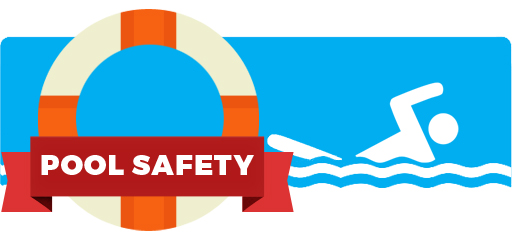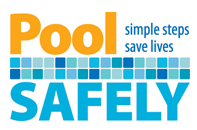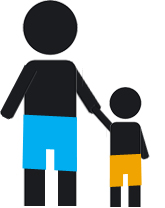Ten Tips for Staying Safe in the Swimming Pool This Summer

At least 174 children between the ages of 1 and 14 drowned in swimming pool or spa accidents between Memorial Day and Labor Day last year, according to the  USA Swimming Foundation and the Consumer Product Safety Commission(CPSC). There were at least two drowning deaths in pools in Oklahoma last summer, the CPSC says.
USA Swimming Foundation and the Consumer Product Safety Commission(CPSC). There were at least two drowning deaths in pools in Oklahoma last summer, the CPSC says.
The National Safety Council(NSC) says children 4 years old and younger have the highest rate of drowning.
 The CPSC created Pool Safely: Simple Steps Save Lives, a national public education campaign to reduce childhood drowning, non-fatal submersions and entrapments in public swimming pools and spas. The campaign carries out the requirements of the Virginia Graeme Baker Pool & Spa Safety Act, a federal law requiring that all public pools in Oklahoma and other states be equipped with drain covers and other safety features to prevent injuries caused by drain suction.
The CPSC created Pool Safely: Simple Steps Save Lives, a national public education campaign to reduce childhood drowning, non-fatal submersions and entrapments in public swimming pools and spas. The campaign carries out the requirements of the Virginia Graeme Baker Pool & Spa Safety Act, a federal law requiring that all public pools in Oklahoma and other states be equipped with drain covers and other safety features to prevent injuries caused by drain suction.
The requirements apply to pools open to the public, hotel pools, pools serving members of a club and their guests, apartment pools and pools open to residents of a multi unit real estate development.
Parents and families can follow 10 simple steps from the National Safety Council and the Centers for Disease Control and Prevention, and avoid accidents:
 Never leave a child unsupervised in a pool or spa. Most drowning and near-drowning incidents happen when a child falls into a pool or is left alone in the bathtub, the NSC says.
Never leave a child unsupervised in a pool or spa. Most drowning and near-drowning incidents happen when a child falls into a pool or is left alone in the bathtub, the NSC says.- Designate someone to supervise children in the pool or spa. The person should not be distracted by reading, texting, or using a smart phone.
 Learn how to swim, and teach your child how to swim once they reach the age of 3. But remember that knowing how to swim does not make anyone “drown-proof.”
Learn how to swim, and teach your child how to swim once they reach the age of 3. But remember that knowing how to swim does not make anyone “drown-proof.”- Learn how to perform cardiopulmonary resuscitation on children and adults.
- If you’re visiting a public pool, you must still keep an eye on your kids. Have children swim with a buddy. Remember that lifeguards aren’t babysitters, and they have more to look after than your children.
 Remember that air-filled or foam toys, such as water wings, noodles and inner-tubes, are not life jackets and are not designed to keep swimmers safe. After using a home pool, remove pool toys from the deck and other visible areas so they do not draw the attention of children to the pool.
Remember that air-filled or foam toys, such as water wings, noodles and inner-tubes, are not life jackets and are not designed to keep swimmers safe. After using a home pool, remove pool toys from the deck and other visible areas so they do not draw the attention of children to the pool.- Teach children to stay away from pool drains, pipes and other openings to avoid entrapment. A drain entrapment occurs when a body is held against a pool or spa drain by the force of the pool’s suction. If a small child is trapped sitting on a faulty drain, in addition to potentially drowning, the child’s bowels and other abdominal organs can be damaged or actually drawn out of their body by the suction of the drain.
- Make sure that any pool or spa you use has drain covers that comply with federal safety standards. If you do not know about your pool, ask the company that services your pool about a safe drain cover.
 If you have a home pool, install a four foot or higher fence around the perimeter of the pool and use self-closing and self-latching gates.
If you have a home pool, install a four foot or higher fence around the perimeter of the pool and use self-closing and self-latching gates. Install pool and gate alarms to let you know when children go near the water and ask neighbors to do the same.
Install pool and gate alarms to let you know when children go near the water and ask neighbors to do the same.
If you have been injured or a loved one of yours has been injured or has drowned in a swimming pool, you may be able to hold the pool’s owner liable for any negligence on their part that led to the accident. In Oklahoma, the premises liability lawyer of Burch, George and Germany can advise you about pursuing a claim.
Blog CATEGORIES
Let's Talk About It
Speak with an experienced attorney at no cost to you

